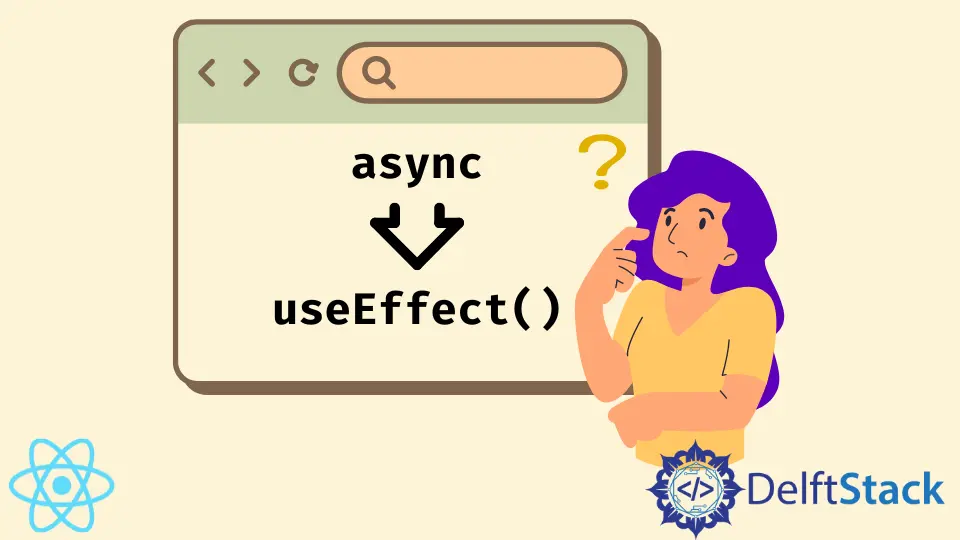How to Use Async Syntax in the useEffect Callback
- Understanding the Challenge with Async in useEffect
- Method 1: Using an Inner Async Function
- Method 2: Handling Cleanup with Async Functions
- Method 3: Using a Custom Hook for Async Logic
- Conclusion
- FAQ

When working with React, the useEffect hook is a powerful tool that allows you to perform side effects in your functional components. However, a common question that arises is how to handle asynchronous operations within this hook. Using async syntax directly in the useEffect callback can lead to unexpected behavior and potential violations of React’s rules.
In this article, we’ll explore effective methods to use async syntax in the useEffect callback without running into issues. Whether you’re fetching data from an API or performing any asynchronous operation, mastering this technique is essential for building robust React applications.
Understanding the Challenge with Async in useEffect
Using async functions directly in the useEffect callback is not allowed because useEffect expects a cleanup function or nothing to be returned. This can lead to confusion, especially for developers who are familiar with async/await syntax in other contexts. The solution lies in creating an inner function that can be declared as async and then invoked within the useEffect.
Method 1: Using an Inner Async Function
One of the simplest ways to handle async operations in useEffect is by defining an inner function. This method allows you to maintain the async/await syntax while adhering to React’s rules.
import React, { useEffect, useState } from 'react';
const MyComponent = () => {
const [data, setData] = useState(null);
useEffect(() => {
const fetchData = async () => {
const response = await fetch('https://api.example.com/data');
const result = await response.json();
setData(result);
};
fetchData();
}, []);
return (
<div>
{data ? <pre>{JSON.stringify(data, null, 2)}</pre> : 'Loading...'}
</div>
);
};
export default MyComponent;
Output:
{
"key": "value"
}
In this example, we define an inner async function called fetchData. This function fetches data from an API and updates the component’s state with the result. By calling fetchData() inside the useEffect, we ensure that the asynchronous operation runs correctly without violating React’s rules. This pattern is clean and easy to understand, making it a popular choice among developers.
Method 2: Handling Cleanup with Async Functions
When working with async operations, it’s essential to handle cleanup properly, especially if the component unmounts before the async operation completes. This ensures you avoid memory leaks or trying to update the state of an unmounted component.
import React, { useEffect, useState } from 'react';
const MyComponent = () => {
const [data, setData] = useState(null);
useEffect(() => {
let isMounted = true;
const fetchData = async () => {
const response = await fetch('https://api.example.com/data');
const result = await response.json();
if (isMounted) {
setData(result);
}
};
fetchData();
return () => {
isMounted = false;
};
}, []);
return (
<div>
{data ? <pre>{JSON.stringify(data, null, 2)}</pre> : 'Loading...'}
</div>
);
};
export default MyComponent;
Output:
{
"key": "value"
}
In this implementation, we introduce a flag called isMounted to track whether the component is still mounted when the async operation completes. Before updating the state with setData, we check if isMounted is true. This prevents any attempts to update the state of an unmounted component, thereby avoiding potential errors or warnings in React. The cleanup function sets isMounted to false, ensuring that our component behaves correctly during its lifecycle.
Method 3: Using a Custom Hook for Async Logic
For more complex applications, you might want to encapsulate async logic in a custom hook. This approach promotes code reusability and keeps your components cleaner.
import React, { useEffect, useState } from 'react';
const useFetch = (url) => {
const [data, setData] = useState(null);
useEffect(() => {
let isMounted = true;
const fetchData = async () => {
const response = await fetch(url);
const result = await response.json();
if (isMounted) {
setData(result);
}
};
fetchData();
return () => {
isMounted = false;
};
}, [url]);
return data;
};
const MyComponent = () => {
const data = useFetch('https://api.example.com/data');
return (
<div>
{data ? <pre>{JSON.stringify(data, null, 2)}</pre> : 'Loading...'}
</div>
);
};
export default MyComponent;
Output:
{
"key": "value"
}
In this example, we create a custom hook called useFetch that takes a URL as an argument. The hook handles the fetching logic and returns the fetched data. This keeps our component clean and focused on rendering. The useFetch hook can be reused across different components, making it a versatile solution for handling async operations in React.
Conclusion
Using async syntax in the useEffect callback is a common requirement in React applications. By understanding the limitations of useEffect and employing strategies like inner functions, cleanup flags, or custom hooks, you can effectively manage asynchronous operations without violating React’s rules. These methods not only enhance code readability but also ensure your applications remain robust and error-free. As you continue to build with React, mastering these patterns will contribute significantly to your development toolkit.
FAQ
-
Can I use async directly in useEffect?
No, you cannot use async directly in the useEffect callback. Instead, define an inner function and call it. -
What happens if I don’t handle cleanup in async operations?
Not handling cleanup can lead to memory leaks and errors when trying to update the state of unmounted components. -
How can I improve code reusability with async operations?
You can encapsulate async logic in a custom hook, which allows you to reuse the logic across different components. -
Is there a performance impact when using async in useEffect?
If not managed properly, async operations can lead to performance issues, especially if components unmount frequently. -
What is the best practice for managing async state in React?
Use state management libraries or context API for complex state management, and always handle cleanup for async operations.
Irakli is a writer who loves computers and helping people solve their technical problems. He lives in Georgia and enjoys spending time with animals.
LinkedIn